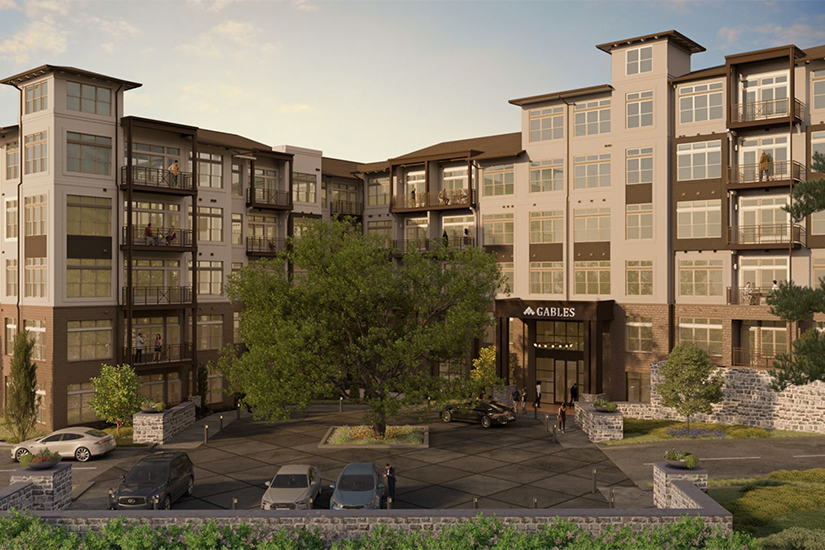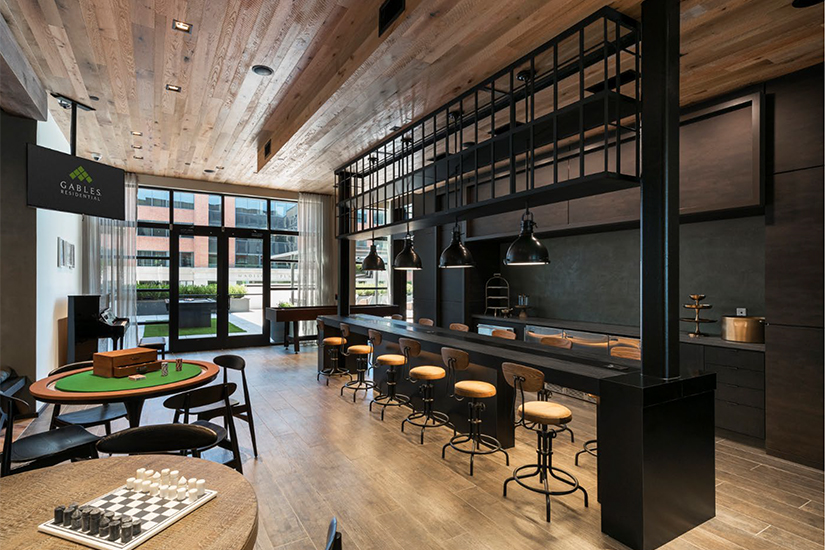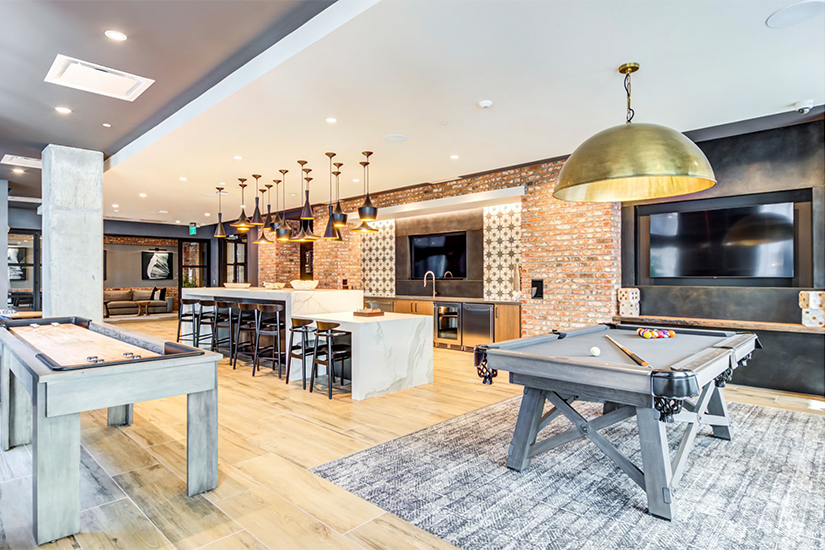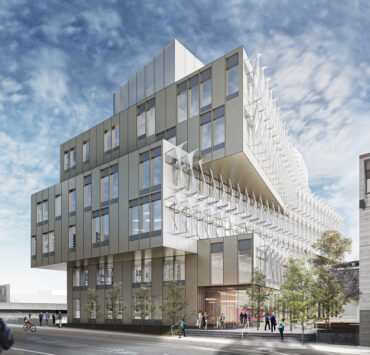|
Getting your Trinity Audio player ready...
|
As vaccinations are administered throughout the nation and restrictions continue to lift after more than a year of quarantining, a “return to normalcy” feels closer than ever. But the reality is that COVID-19 hasn’t simply paused reality; it’s ushered in a new way of living altogether.
That’s certainly the case for Lynn Riley Stokes, regional vice president of design at Gables Residential, headquartered in Atlanta, Georgia, as the post-COVID era promises changes that influence where apartment communities are built and how apartments are designed.
“Before the pandemic, we focused on more urban locations and established neighborhoods, but our investors, and the real estate industry overall, are thinking differently about the opportunities to have wonderful places to live that aren’t dependent on being so close to an on-site workspace,” Stokes observes. “We’re further exploring the concept and have already started working on some projects that take advantage of opportunities a little further out than we were typically pursuing before the pandemic.”

Gables is branching out to commuter zones and more projects like Gables Vinings Village in Atlanta, which offers 295 apartment homes. Vinings Village is a suburban location next to a walkable village with restaurants and shops. A large specimen signature oak tree, emblematic of the repurposed lumber from the site, welcomes visitors and residents at the entry court. The team intentionally worked to blur indoor and outdoor boundaries to immerse users in the natural landscape of the area.
“The community is at the top of a hillside, offering beautiful views including an expansive view of the Atlanta skyline,” Stokes says. “We’re 15 miles outside of downtown Atlanta but we can see the skyline over the treetops, and it’s really quite spectacular.”
For Stokes, adapting to change has long been part of her job. For example, ever-changing developments in technology continuously influence how apartments are designed.
“Technology shifts impact ways one thinks about apartments. Apartment homes offer limited space and our goal is to apply the utmost flexibility maximizing the space people have,” Stokes explains. “It causes you to constantly rethink functionality when you’re planning apartment homes.”

Stokes draws an analogy to how people have watched television over the years. TVs were originally pieces of furniture, evolved to sleek appliances mounted on walls, and now many people watch shows, movies, and media on portable devices: laptops, tablets, and even cellphones.
These days, the growing trend of working from home has Stokes thinking about how to use natural light and maximizing spaces that are private, thus providing residents with a place where they can focus on work without distractions.
“I would say that many of our projects in the last 5 years had not incorporated a built-in desk as much as previously because of the laptop technology shift,” Stokes says. “Now, with post-pandemic lessons, we have a project we’re working on in Denver, and about 50 percent of our apartment homes will have a built-in desk or designated work-from-home space. This is an example of the domino effect from public health and technology that now influence daily apartment living.”
Stokes was a stay-at-home mom when her kids started going to school, which led to her thinking about what her next step would be. She returned to school and earned a Master of Architecture from the University of Maryland. After graduating, she worked on projects ranging from campus planning to student housing, single-family homes, and high-end custom modern homes.

“I had great exposure to multiple real estate components, and I have a strong interest in landscape architecture as well,” she recalls. “All of those pieces build up an understanding of how they all work together to make a community.”
She became interested in developing a role at Gables, which had an excellent reputation, along with a lot of talented developers.
“At that point in time Gables was building new projects, and there seemed to be a missing link between our operations team, our development team, and our construction team,” Stokes explains. “We didn’t have a design department at the time, but the idea was to create a better connection between our departments to maximize the success of a project—and ideally, someone with a background in design would facilitate the discussion and be able to find solutions to meet the company’s best interests.”
Because her position was new, much of her early work for Gables was dedicated to determining what the scope of the role would be.

“Over three years, I worked with all related departments to develop a process and role to act as an editor/owner’s rep between design consultants, developers, and the construction team,” Stokes says. “The role was a positive influence on our projects—they became more cohesive, and budgets were maximized as we prioritized what would have the greatest impact on each project.”
Gables’ strategic partners appreciate the design VP’s collaborative leadership style and the relationship they’ve forged with both. Jeffery Schulte, Delta Faucet Company’s national builder account manager of multifamily products, notes that Gables’ values align with Delta’s. “Across our three brand tiers, Peerless (affordable design), Delta (Flagship), and Brizo (Luxury),” Schulte says, “we’ve excelled in supplying Gables with the right high-quality products, long term support, and price points an owner/operator requires.”
Stokes is especially excited about Gables Old Town North, located on the edge of Old Town Alexandria, Virginia, which features 232 apartment homes built on a historic site that was the location for the lock system of canals during the mid-1800s and Civil War.

A hallmark of the project is public art, including two commissioned pieces—a sculpture that is inspired by the canal system’s granite retaining walls and a video installation that projects the movement of water onto a seven-foot glass disk in the lobby.
“Old Town Alexandria is an area that has experienced change over the last 50 years. It has been an industrial area that’s now starting to really focus on its identity as a walkable residential neighborhood,” Stokes says, noting that its officials are supportive of using creativity to incorporate a strong, positive identity. “They’re interested in identifying as an arts district and that was a very strong incentive for us to take that extra step and seek out talented artists and commission some pieces, as well as procure wonderful original pieces of art that we also have displayed at our community.”
It’s yet another example of the vision Gables has established for its developments and Lynn Stokes and her team applying creativity, a community’s interest, and forward thinking to her work at Gables communities across the country.


